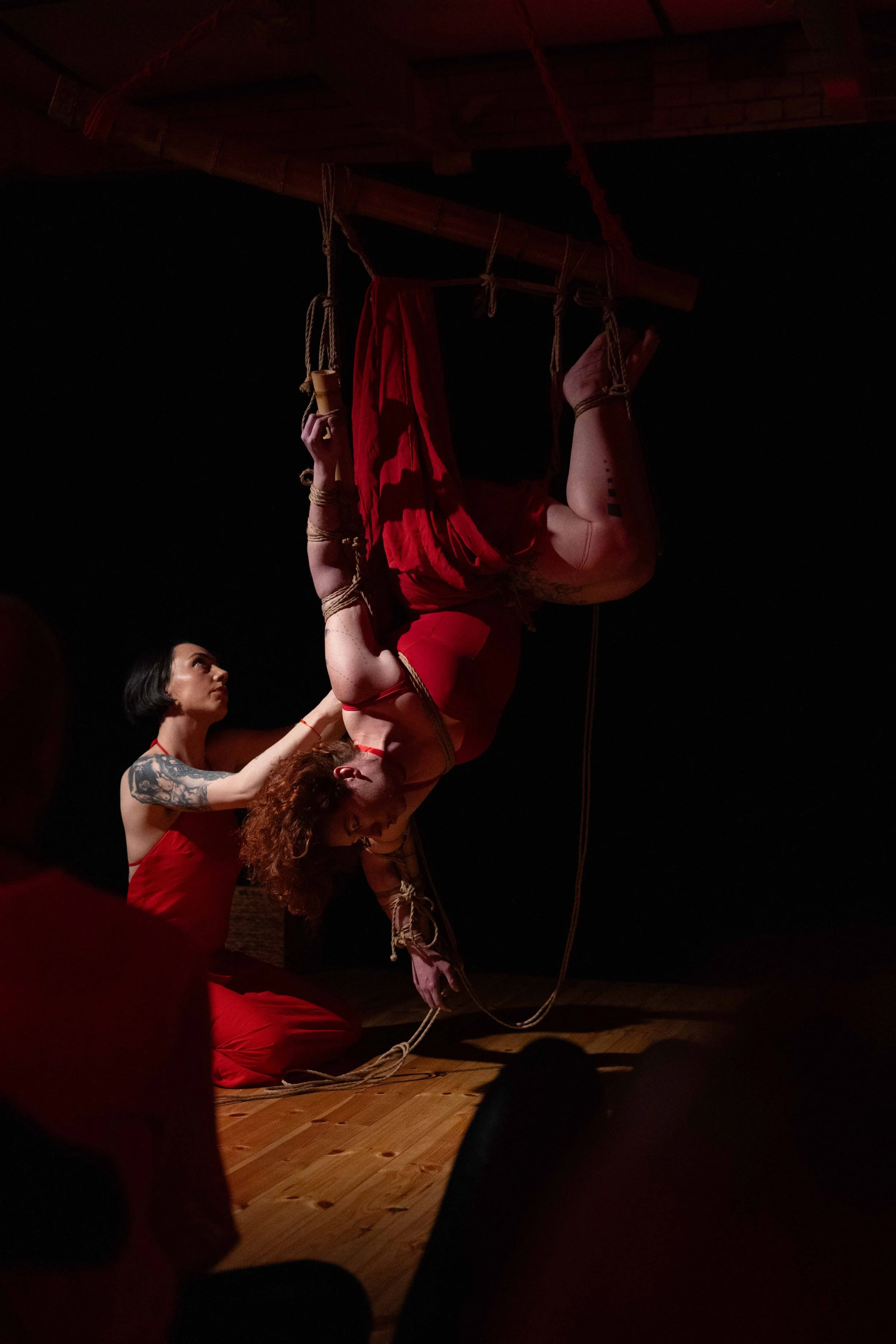Falling Into Form
Evolving & Deepening Transitions
“Falling Into Form: Evolving & Deepening Transitions” is the second in a series of workshops exploring Gestalta’s style of tying through the lens of transitions—not just as movement between shapes, but as a core expressive element in rope itself.
Transitioning—moving a tied body fluidly from one shape to another—has always been central to my personal style of rope. There’s a common misconception that transitions are purely performative—a kind of “circus rope” reserved for stage work. And while I do use them extensively in performance, transitions are equally at the heart of how I tie in play. They offer a way of creating narrative within a scene—shaping experience through movement—not just for visual effect, but to build emotional depth and physical connection.
This workshop is designed for advanced participants who already possess a developed skill set on both sides of the rope, who are comfortable with basic transition work but wish to expand the breadth of their practice, and understand Gestalta’s approach on a deeper level.
Together we will work with structures that demand nuance in transitions—such as strappados, bamboo-on-body ties, and agura—developing a deeper understanding of how to use each form for dynamic movement, and intense opportunities for play.
Gestalta will share subtle adjustments and refinements they have honed over years of practice to make classic ties both stable and adaptable for transition work, without losing their aesthetic strength.
A note about the ‘falling into form’ workshop series
The progression of this workshop series is not defined by increasingly complex technical skills (or “hard skills”.) Instead, it offers a multi-layered approach that brings Gestalta’s extensive experience as a shibari artist into conversation with their love of dance practice, and their academic background in performance art.
Foundations of Fluid Transitions explores foundational transition sequences whilst focussing on development of the core skills—such as fluid handling, body awareness, and efficient technique—that allow more advanced transitions to become sustainable, expressive, and safe.
Evolving & Deepening Transitions works with more demanding structures and sequences that challenge students to refine their practice and expand their creative possibilities, whilst developing a deeper understanding of how to use dynamic movement to create intense opportunities for play. It is perhaps the most complex part of this series on a technical level, and requires that both riggers and models have a well developed skill set.
Performance & Presence considers the language of rope beyond structure, sequence & form—whether in the intimacy of play or in the context of performance. It explores the architecture of a rope scene and focuses on cultivating awareness, presence, and intention to create engaging narratives for both audiences, and our models.
Photo credit: Negar Zendedel
Pre-requisites
All participants must either have attended the first part in this workshop series, or have prior experience in performing basic transitions.
Riggers should be confident in their ability to efficiently & fluidly tie common suspension harnesses (such as takate kote, futomomo, etc.), must be experienced in managing multiple suspension lines (at least on bamboo and preferably also on rings/carabiners), be able to safely attach and lock off suspension lines under load, and have experience with techniques for lifting/lowering their models which they know work well for them.
Models should have experience of being suspended in common harnesses, possess body awareness around nerve safety and circulation, understand the difference between discomfort and unsustainable or unsafe sensations, and be able to clearly communicate their needs within rope.
Notes
Switching is not possible at this workshop.
Although teacher demonstrations will include ties such as TK, strappado, ‘crucifixion’ harnesses etc., we understand that not all models are comfortable in all ties. You are invited and encouraged to use alternatives, and to modify the exercises to better fit your needs.

